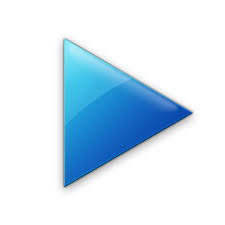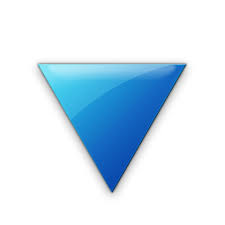Lincoln Navigator: Driveshaft / Driveshaft. Diagnosis and Testing
Symptom Chart(s)
Diagnostics in this manual assume a certain skill level and knowledge of Ford-specific diagnostic practices.
REFER to: Diagnostic Methods (100-00 General Information, Description and Operation).
Symptom Chart: NVH
Symptom Chart
| Condition | Actions |
|---|---|
| Driveline clunk - loud clunk when shifting from REVERSE to DRIVE | GO to Pinpoint Test A |
| Driveline clunk — occurs as the vehicle starts to move forward following a stop | GO to Pinpoint Test B |
| Driveline Clunk– Fastener Torque to transmission and rear axle | GO to Pinpoint Test C |
| Buzz – buzzing noise is the same at cruise or coast/deceleration | GO to Pinpoint Test D |
| Rumble or Boom – noise occurs at coast/ deceleration, usually driveshaft speed-related and noticeable over a wide range of speeds | GO to Pinpoint Test E |
| Grunting — normally associated with a shudder experienced during acceleration from a complete stop | GO to Pinpoint Test F |
| Driveline shudder – occurs during acceleration from a slow speed or stop | GO to Pinpoint Test G |
| Driveline vibration - occurs at cruising speeds | GO to Pinpoint Test H |
Global Customer Symptom Code (GCSC) Chart
Diagnostics in this manual assume a certain skill level and knowledge of Ford-specific diagnostic practices.
REFER to: Diagnostic Methods (100-00 General Information, Description and Operation).
| Symptom | Action |
|---|---|
| Start/Run/Move > Noise > Moving/Driving > Always | GO to Pinpoint Test A |
| Start/Run/Move > Noise > Moving/Driving > Always | GO to Pinpoint Test B |
| Start/Run/Move > Noise > Moving/Driving > Always | GO to Pinpoint Test C |
| Start/Run/Move > Noise > Moving/Driving > Always | GO to Pinpoint Test D |
| Start/Run/Move > Noise > Moving/Driving > Always | GO to Pinpoint Test E |
| Start/Run/Move > Noise > Moving/Driving > Always | GO to Pinpoint Test F |
| Start/Run/Move > Vibration > Moving/Driving > Intermittent | GO to Pinpoint Test G |
| Start/Run/Move > Vibration > Moving/Driving > Intermittent | GO to Pinpoint Test H |
Pinpoint Tests

 PINPOINT TEST A: DRIVELINE CLUNK- LOUD CLUNK WHEN SHIFTING FROM REVERSE TO DRIVE
PINPOINT TEST A: DRIVELINE CLUNK- LOUD CLUNK WHEN SHIFTING FROM REVERSE TO DRIVE|
Normal Operation and Fault Conditions The driveline system enables the power generated by the engine and transferred through the transmission and, if applicable, transfer case, to place the vehicle in motion. Rotational torque received from the transmission or transfer case is delivered to the front and rear drive axles by way of the driveshafts. The U-joints or CV joints at the ends of the shafts allow the shafts to rotate smoothly in an allowable angle plane. The rotational torque is introduced into the axle differential which drives the axles/halfshaft. Possible Sources
|
||||
| A1 INSPECT THE DRIVESHAFT U-JOINTS FOR WEAR OR DAMAGE | ||||
Was any damage found?
|

 PINPOINT TEST B: DRIVELINE CLUNK- OCCURS AS THE VEHICLE STARTS TO MOVE FORWARD FOLLOWING A STOP
PINPOINT TEST B: DRIVELINE CLUNK- OCCURS AS THE VEHICLE STARTS TO MOVE FORWARD FOLLOWING A STOP|
Normal Operation and Fault Conditions The driveline system enables the power generated by the engine and transferred through the transmission and, if applicable, transfer case, to place the vehicle in motion. Rotational torque received from the transmission or transfer case is delivered to the front and rear drive axles by way of the driveshafts. The U-joints or CV joints at the ends of the shafts allow the shafts to rotate smoothly in an allowable angle plane. The rotational torque is introduced into the axle differential which drives the axles/halfshaft. Possible Sources
|
||||
| B1 INSPECT THE DRIVESHAFT U-JOINT FOR A WORN CONDITION | ||||
Was any damage found?
|

 PINPOINT TEST C: DRIVELINE CLUNK– FASTENER TORQUE TO TRANSMISSION AND REAR AXLE
PINPOINT TEST C: DRIVELINE CLUNK– FASTENER TORQUE TO TRANSMISSION AND REAR AXLE|
Normal Operation and Fault Conditions The driveline system enables the power generated by the engine and transferred through the transmission and, if applicable, transfer case, to place the vehicle in motion. Rotational torque received from the transmission or transfer case is delivered to the front and rear drive axles by way of the driveshafts. The U-joints or CV joints at the ends of the shafts allow the shafts to rotate smoothly in an allowable angle plane. The rotational torque is introduced into the axle differential which drives the axles/halfshaft. Possible Sources
|
||||
| C1 CHECK FOR LOOSE OR CROSSTHREADED FASTENERS | ||||
Are any fasteners loose?
|

 PINPOINT TEST D: BUZZ – BUZZING NOISE IS THE SAME AT CRUISE OR COAST/DECELERATION
PINPOINT TEST D: BUZZ – BUZZING NOISE IS THE SAME AT CRUISE OR COAST/DECELERATION|
Normal Operation and Fault Conditions The driveline system enables the power generated by the engine and transferred through the transmission and, if applicable, transfer case, to place the vehicle in motion. Rotational torque received from the transmission or transfer case is delivered to the front and rear drive axles by way of the driveshafts. The U-joints or CV joints at the ends of the shafts allow the shafts to rotate smoothly in an allowable angle plane. The rotational torque is introduced into the axle differential which drives the axles/halfshaft. Possible Sources
|
||||
| D1 CHECK DRIVELINE ANGLES | ||||
Are the driveline angles incorrect?
|

 PINPOINT
TEST E: RUMBLE OR BOOM – NOISE OCCURS AT COAST/ DECELERATION, USUALLY
DRIVESHAFT SPEED-RELATED AND NOTICEABLE OVER A WIDE RANGE OF SPEEDS
PINPOINT
TEST E: RUMBLE OR BOOM – NOISE OCCURS AT COAST/ DECELERATION, USUALLY
DRIVESHAFT SPEED-RELATED AND NOTICEABLE OVER A WIDE RANGE OF SPEEDS |
Normal Operation and Fault Conditions The driveline system enables the power generated by the engine and transferred through the transmission and, if applicable, transfer case, to place the vehicle in motion. Rotational torque received from the transmission or transfer case is delivered to the front and rear drive axles by way of the driveshafts. The U-joints or CV joints at the ends of the shafts allow the shafts to rotate smoothly in an allowable angle plane. The rotational torque is introduced into the axle differential which drives the axles/halfshaft. Possible Sources
|
||||
| E1 CHECK THE DRIVESHAFT FOR DAMAGE, MISSING WEIGHTS OR UNDERCOATING | ||||
Was the driveshaft damaged or out of balance?
|

 PINPOINT TEST F: GRUNTING- NORMALLY ASSOCIATED WITH A SHUDDER EXPERIENCED DURING ACCELERATION FROM A COMPLETE STOP
PINPOINT TEST F: GRUNTING- NORMALLY ASSOCIATED WITH A SHUDDER EXPERIENCED DURING ACCELERATION FROM A COMPLETE STOP|
Normal Operation and Fault Conditions The driveline system enables the power generated by the engine and transferred through the transmission and, if applicable, transfer case, to place the vehicle in motion. Rotational torque received from the transmission or transfer case is delivered to the front and rear drive axles by way of the driveshafts. The U-joints or CV joints at the ends of the shafts allow the shafts to rotate smoothly in an allowable angle plane. The rotational torque is introduced into the axle differential which drives the axles/halfshaft. Possible Sources
|
||||
| F1 INSPECT THE DRIVESHAFT CV (CONSTANT VELOCITY) JOINT AND/OR U-JOINT FOR A BINDING | ||||
Was the driveshaft CV joint binding found ?
|

 PINPOINT TEST G: DRIVELINE SHUDDER- OCCURS DURING ACCELERATION FROM A SLOW SPEED OR STOP
PINPOINT TEST G: DRIVELINE SHUDDER- OCCURS DURING ACCELERATION FROM A SLOW SPEED OR STOP|
Normal Operation and Fault Conditions The driveline system enables the power generated by the engine and transferred through the transmission and, if applicable, transfer case, to place the vehicle in motion. Rotational torque received from the transmission or transfer case is delivered to the front and rear drive axles by way of the driveshafts. The U-joints or CV joints at the ends of the shafts allow the shafts to rotate smoothly in an allowable angle plane. The rotational torque is introduced into the axle differential which drives the axles/halfshaft. Possible Sources
|
||||
| G1 CHECK DRIVELINE ANGLES | ||||
Are the driveline angles incorrect?
|
||||
| G2 INSPECT THE DRIVESHAFT CV (CONSTANT VELOCITY) JOINTS AND/OR U-JOINT AND COUPLING SHAFT FOR WEAR OR DAMAGE | ||||
Was wear or damage found?
|

 PINPOINT TEST H: DRIVELINE VIBRATION - OCCURS AT CRUISING SPEEDS
PINPOINT TEST H: DRIVELINE VIBRATION - OCCURS AT CRUISING SPEEDS |
Normal Operation and Fault Conditions The driveline system enables the power generated by the engine and transferred through the transmission and, if applicable, transfer case, to place the vehicle in motion. Rotational torque received from the transmission or transfer case is delivered to the front and rear drive axles by way of the driveshafts. The U-joints or CV joints at the ends of the shafts allow the shafts to rotate smoothly in an allowable angle plane. The rotational torque is introduced into the axle differential which drives the axles/halfshaft. Possible Sources
|
||||
| H1 CHECK THE DRIVESHAFT CENTER BEARING INSULATOR FOR DAMAGE OR WEAR | ||||
Was wear or damage found?
|
||||
| H2 CHECK FOR CENTER BEARING BOLTS NOT SEATED PROPERLY | ||||
Are the center bearing bolts not seated properly?
|
||||
| H3 CHECK FOR LOOSE AXLE PINION FLANGE BOLTS | ||||
Are any bolts loose?
|
||||
| H4 CHECK FOR AXLE PINION FLANGE RUNOUT | ||||
Are the runout correct?
|
||||
| H5 CHECK THE DRIVESHAFT FOR DAMAGE, MISSING WEIGHTS OR UNDERCOATING | ||||
Was a system fault found ?
|
||||
| H6 INSPECT THE DRIVESHAFT CV (CONSTANT VELOCITY) JOINTS AND/OR U-JOINT FOR WEAR OR DAMAGE | ||||
Was wear or damage found?
|
||||
| H7 CHECK FOR DRIVESHAFT RUNOUT | ||||
Are the runout correct?
|
||||
| H8 CHECK DRIVELINE ANGLES | ||||
Are the driveline angles incorrect?
|
 Driveshaft Angle Measurement. General Procedures
Driveshaft Angle Measurement. General Procedures
Check
NOTE:
This procedure does not apply to CV joints, flex couplers or
double cardan joints that are used in some driveshafts. This check is
for single-cross and roller-style joints found in the driveshafts...
Other information:
Lincoln Navigator 2018-2025 Workshop Manual: Direct Current/Direct Current (DC/DC) Converter Control Module - Overview. Description and Operation
OVERVIEW The Low voltage Direct Current/Direct Current (DC/DC) converter, also known as the Voltage Quality Module (VQM), is on vehicles equipped with the auto-start-stop system. Auto-start-stop technology provides fuel savings by turning the engine off when the vehicle is stopped and then automatically restarting the engine when the driver is ready to continue driving...
Lincoln Navigator 2018-2025 Workshop Manual: Windshield Wiper Motor. Removal and Installation
Removal NOTE: Removal steps in this procedure may contain installation details. NOTE: The hood is removed in this procedure for clarity. Remove the cowl panel grill. Refer to: Cowl Panel Grille (501-02 Front End Body Panels, Removal and Installation)...
Categories
- Manuals Home
- 4th Gen Lincoln Navigator Service Manual (2018 - 2025)
- All Terrain Control Module (ATCM). Removal and Installation
- Front Bumper Cover. Removal and Installation
- Body Control Module (BCM). Removal and Installation
- Brake Service Mode Activation and Deactivation. General Procedures
- Transmission Fluid Drain and Refill. General Procedures
Diagnostic Methods. Description and Operation
This document provides critical diagnostic knowledge required for successful repair outcomes. It identifies technical competencies expected by users of this manual.
Ford Diagnostic Assumptions
Ford diagnostics assume the vehicle concern described by the test title is currently present. Exceptions to this rule are noted in each test. Do not replace modules or other components as directed by a diagnostic if the concern is not present at the time of testing.

